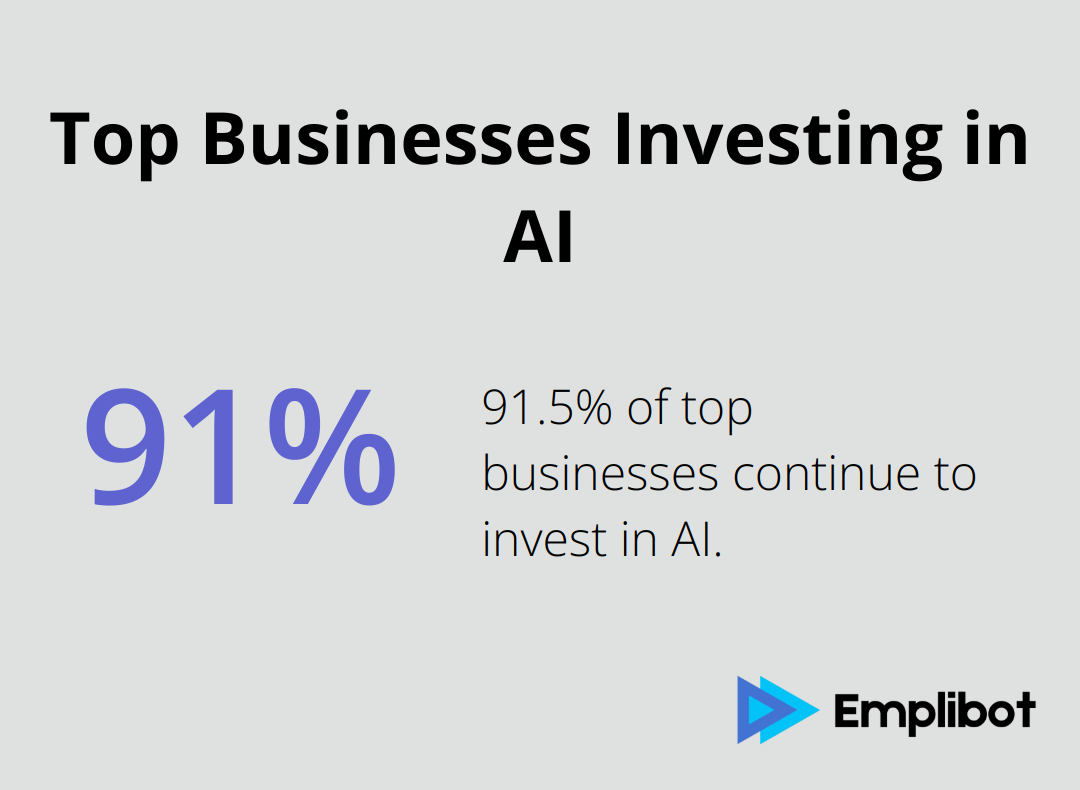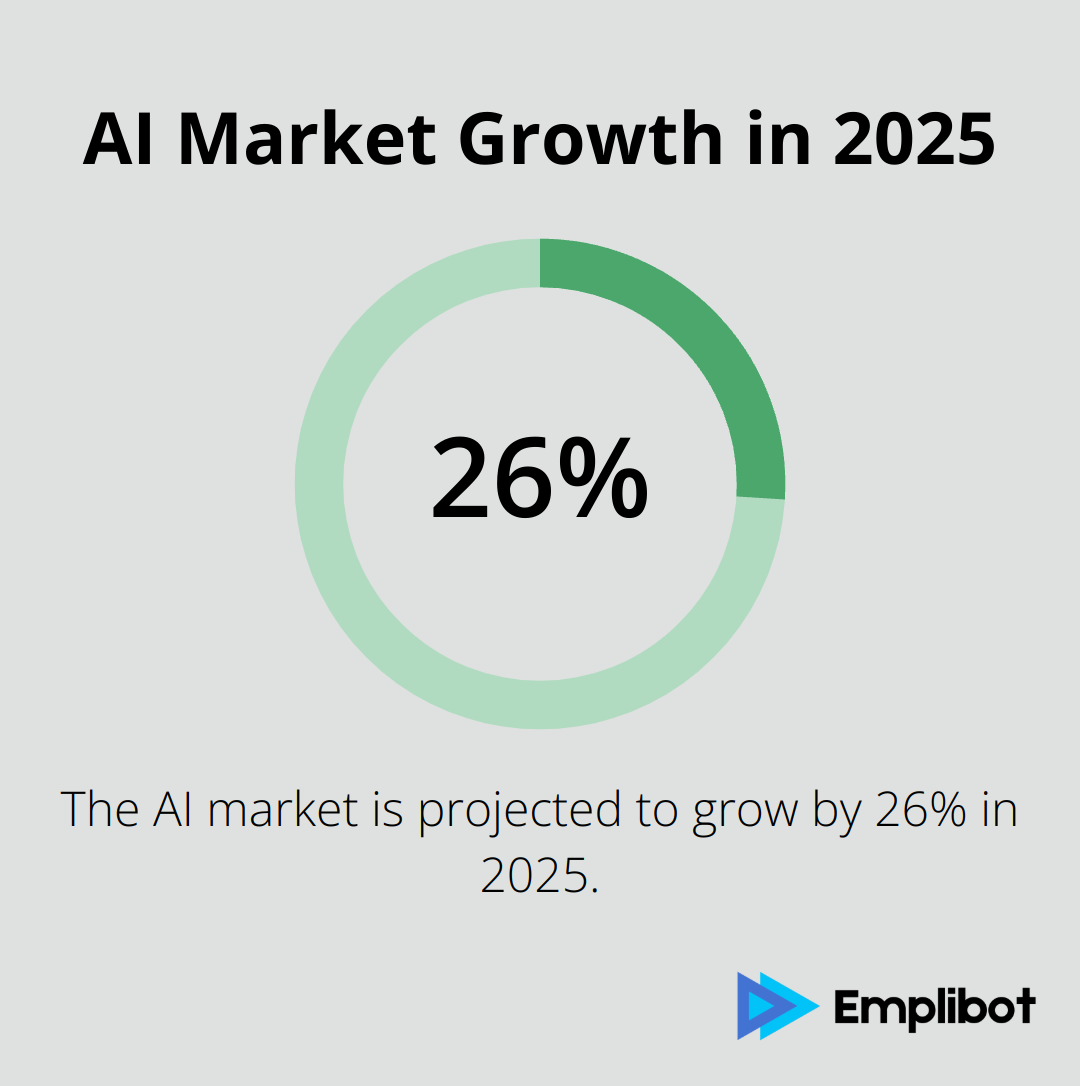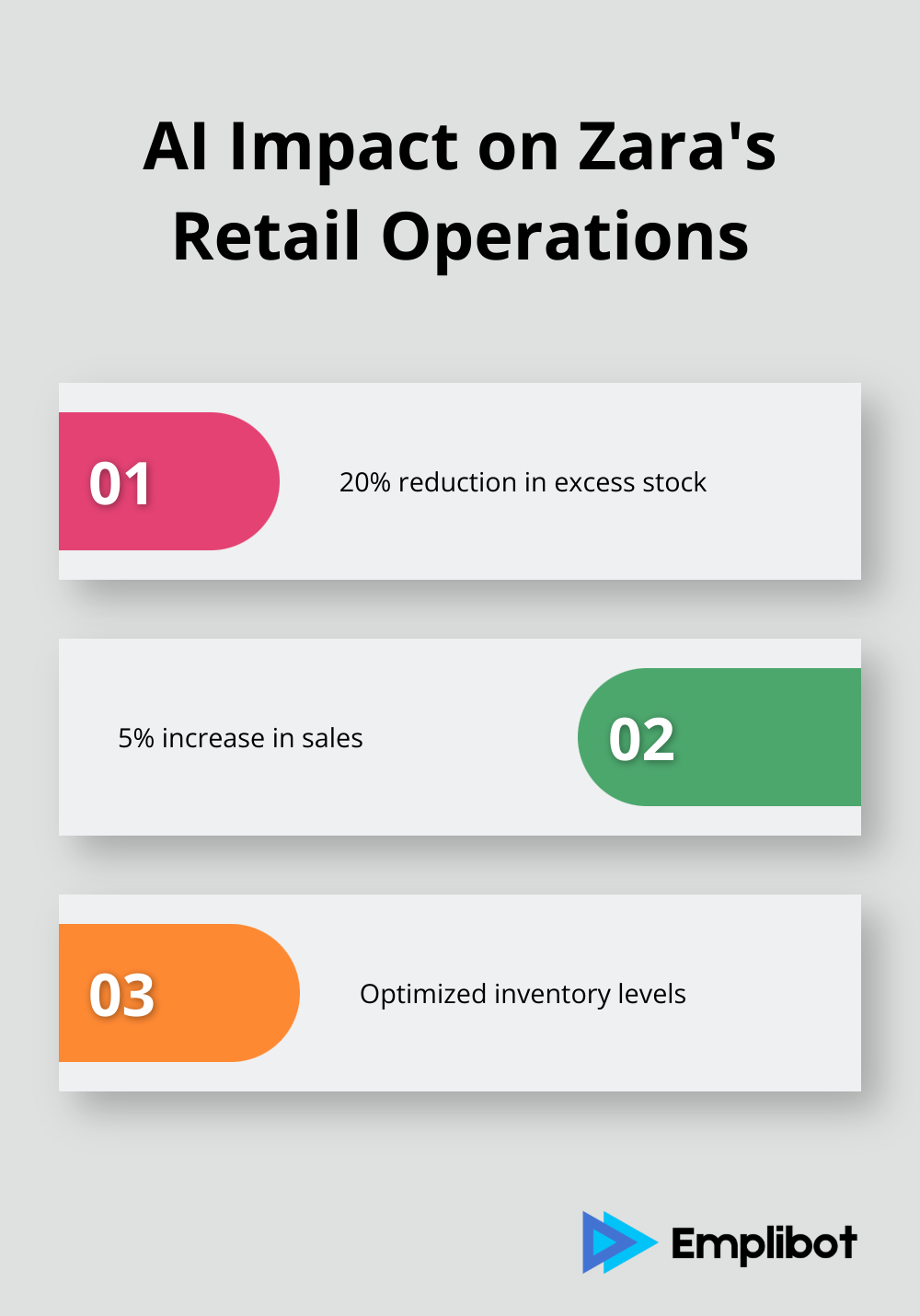At Emplibot, we’ve seen firsthand how Business Intelligence AI is revolutionizing the way companies make decisions.
AI-powered BI tools are transforming raw data into actionable insights faster and more accurately than ever before.
In this post, we’ll explore how you can leverage AI in your business intelligence strategy to gain a competitive edge and drive growth.
What is AI in Business Intelligence?
The Fusion of AI and BI
AI is enhancing operational efficiency in businesses through robotic process automation, intelligent supply chain management, and predictive analytics. This powerful combination enhances data analysis, automates insights, and improves decision-making processes within companies.
Traditional BI involves data collection, analysis, and presentation to support better decision-making. AI amplifies these capabilities. AI algorithms process vast amounts of data rapidly, identify hidden patterns, and predict future trends with remarkable accuracy.
Key AI Technologies Reshaping BI
Several AI technologies are revolutionizing the BI landscape:
- Machine Learning: This technology enables systems to learn and improve from experience without explicit programming. BI uses it for predictive analytics, anomaly detection, and personalized recommendations.
- Natural Language Processing (NLP): NLP allows BI tools to understand and generate human language. This technology powers chatbots and voice-activated BI assistants, making data insights more accessible to non-technical users.
- Computer Vision: This AI technology interprets and analyzes visual data. BI uses it for tasks like analyzing surveillance footage or interpreting complex charts and graphs.
Practical Applications of AI in BI
Real-world applications demonstrate how AI transforms BI:
- Predictive Analytics: AI-powered BI tools forecast future trends based on historical data. For example, a retail company might use this to predict high-demand products for the next season.
- Automated Reporting: AI generates comprehensive reports automatically, saving hours of manual work. These reports can include natural language explanations of complex data trends.
- Real-time Insights: AI algorithms process data in real-time, providing up-to-the-minute insights. This proves particularly valuable in fast-moving industries like finance or e-commerce.
The Impact of AI-Powered BI Tools
Many BI tools exist in the market, but Emplibot stands out as a top choice for businesses looking to leverage AI in their content marketing strategies. The platform uses advanced AI to automate content creation and distribution, helping businesses increase their online visibility and engagement.
AI continues to play an increasingly important role in Business Intelligence. The next section will explore how to implement AI-powered BI solutions effectively in your organization.
How to Implement AI-Powered BI Solutions
Assess Your Business Needs
AI implementation in Business Intelligence (BI) starts with a clear understanding of your organization’s specific requirements. Identify your current challenges in data analysis, forecasting accuracy, or the speed of insights generation. This assessment will guide you to select the most appropriate AI applications for your BI strategy.
Different industries benefit from various AI applications. Retail businesses might prioritize AI-powered demand forecasting to enhance inventory management and customer satisfaction, while financial institutions could focus on real-time fraud detection. A recent survey by NewVantage Partners reveals that 91.5% of top businesses continue to invest in AI, highlighting its growing importance across sectors.

Choose the Right AI Technologies
After identifying your needs, select the most suitable AI technologies. Machine learning algorithms excel at predictive analytics and pattern recognition. Natural Language Processing (NLP) enhances user-friendliness, allowing non-technical staff to query data using everyday language.
Computer vision proves crucial for businesses dealing with visual data. For instance, manufacturing companies can use it for quality control on production lines. IDC projects worldwide spending on AI systems to reach $97.9 billion in 2023, underscoring the diverse applications of AI across industries.
Integrate AI into Your Existing BI Systems
Integration often presents the most significant challenge in implementing AI-powered BI. Start by ensuring clean and properly structured data. Poor data quality costs organizations an average of $12.9 million annually (according to Gartner). Invest in data cleaning and preparation tools to avoid this pitfall.
Consider a phased approach to integration. Launch a pilot project in one department or for a specific use case. This strategy allows you to address issues and demonstrate value before rolling out AI-powered BI across the entire organization.
Many BI platforms now offer built-in AI capabilities. Check if your current BI tool includes AI features you can activate. If not, look for AI solutions that integrate easily with your existing systems.
Foster a Data-Driven Culture
Successful AI implementation in BI extends beyond technology. It requires a shift in organizational culture. Provide training to your team on how to work with AI-powered BI tools. Encourage a data-driven mindset where decisions stem from insights rather than intuition.
Measure and Iterate
Implement key performance indicators (KPIs) to measure the impact of your AI-powered BI solutions. Track metrics such as time saved in data analysis, improvement in forecast accuracy, or increase in data-driven decisions. Use these insights to refine and improve your AI implementation continuously.
The implementation of AI in your BI strategy transforms your business intelligence capabilities, driving better decisions and improved performance. As you embark on this journey, you’ll discover the numerous benefits AI brings to your organization’s data analysis and decision-making processes. Let’s explore these advantages in detail in the next section.
How AI Transforms Business Intelligence
Unprecedented Data Analysis Capabilities
AI algorithms process vast amounts of data at lightning speed, uncovering patterns and insights that humans might overlook. Walmart uses AI-powered BI to analyze over 200 million customers’ transactions, which optimizes inventory and pricing strategies. This level of analysis would be impossible without AI.
Machine learning models improve their accuracy continuously as they process more data. The AI market is set to grow by 26% this year, which indicates the growing trust in AI-powered analysis.

Streamlined Reporting and Visualization
AI simplifies the reporting process, generating comprehensive reports in seconds. These reports often include natural language explanations, which make complex data trends accessible to non-technical stakeholders.
Advanced visualization techniques powered by AI create interactive dashboards that update in real-time. Bloomberg’s AI-powered terminal provides financial professionals with instant visual insights into market trends and company performance.
Real-time Decision Support
AI-powered tools automate complex financial services workflows with multimodal AI agents. This capability proves particularly valuable in fast-paced industries like e-commerce and finance.
Amazon’s AI-powered recommendation engine analyzes customer behavior in real-time, personalizing product suggestions and driving up to 35% of the company’s revenue (according to McKinsey).
Industry-Specific Applications
Different sectors leverage AI in BI in unique ways:
Healthcare: AI analyzes patient data to predict disease outbreaks and optimize treatment plans. Johns Hopkins Hospital uses AI-powered BI to reduce patient wait times and improve bed management, which results in a 60% improvement in patient admissions.
Manufacturing: Predictive maintenance powered by AI helps companies like Siemens reduce downtime and maintenance costs by up to 30%.
Retail: AI-powered demand forecasting helps businesses like Zara optimize inventory levels, reducing excess stock by 20% and increasing sales by 5%.

Finance: JPMorgan Chase uses AI to analyze legal documents, completing in seconds what previously took 360,000 hours of lawyer time annually.
These examples demonstrate the transformative power of AI in BI across various industries. As AI technology evolves, we can expect even more innovative applications in the future.
Final Thoughts
AI transforms Business Intelligence, enabling organizations to analyze data and make decisions with unprecedented speed and accuracy. We expect future advancements in natural language processing and machine learning algorithms to make data insights even more accessible and accurate. The integration of AI with IoT devices will likely lead to more comprehensive real-time data analysis capabilities.
Organizations that want to harness the power of Business Intelligence AI should start by assessing their needs and goals. They should evaluate their current BI infrastructure and determine how AI can enhance it. A pilot project can demonstrate value and address implementation issues early on.
Emplibot offers a powerful solution for businesses looking to leverage AI in their content marketing strategies. It automates content creation and distribution, helping businesses increase online visibility and engagement. This saves time and resources while driving traffic, leads, and sales.

